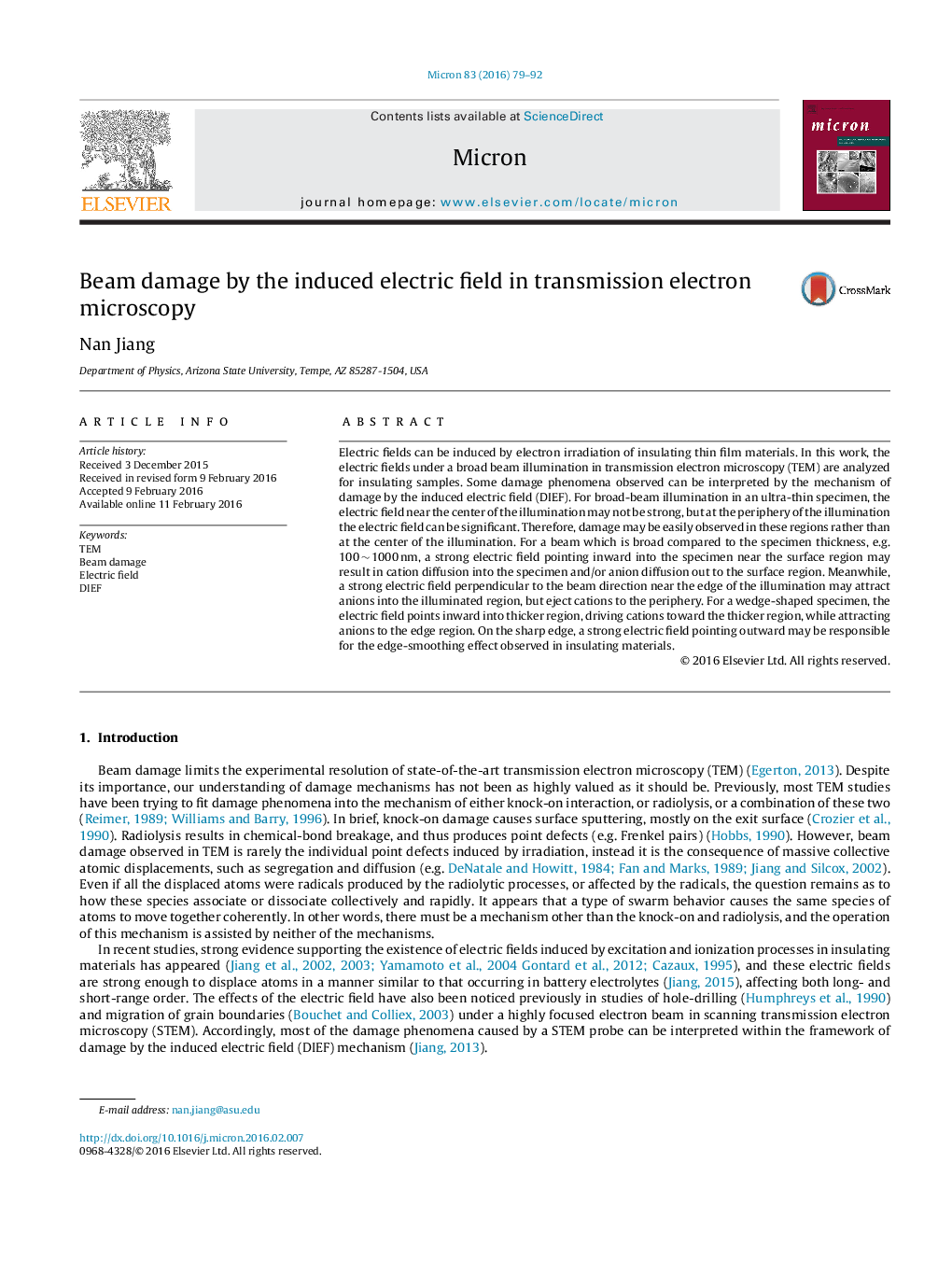| کد مقاله | کد نشریه | سال انتشار | مقاله انگلیسی | نسخه تمام متن |
|---|---|---|---|---|
| 1588714 | 1515133 | 2016 | 14 صفحه PDF | دانلود رایگان |
• Damage by the induced electric field in the TEM is thoroughly analyzed.
• Damage is caused by atom migration driven by the induced electric field.
• The electric field is produced by trapped positive charges on surfaces due to electron emissions.
• The field is strong at the surface region and near the periphery of the illumination.
• In the wedge-shaped specimen, the field is strong at the edge of the specimen.
Electric fields can be induced by electron irradiation of insulating thin film materials. In this work, the electric fields under a broad beam illumination in transmission electron microscopy (TEM) are analyzed for insulating samples. Some damage phenomena observed can be interpreted by the mechanism of damage by the induced electric field (DIEF). For broad-beam illumination in an ultra-thin specimen, the electric field near the center of the illumination may not be strong, but at the periphery of the illumination the electric field can be significant. Therefore, damage may be easily observed in these regions rather than at the center of the illumination. For a beam which is broad compared to the specimen thickness, e.g. 100 ∼ 1000 nm, a strong electric field pointing inward into the specimen near the surface region may result in cation diffusion into the specimen and/or anion diffusion out to the surface region. Meanwhile, a strong electric field perpendicular to the beam direction near the edge of the illumination may attract anions into the illuminated region, but eject cations to the periphery. For a wedge-shaped specimen, the electric field points inward into thicker region, driving cations toward the thicker region, while attracting anions to the edge region. On the sharp edge, a strong electric field pointing outward may be responsible for the edge-smoothing effect observed in insulating materials.
Journal: Micron - Volume 83, April 2016, Pages 79–92
